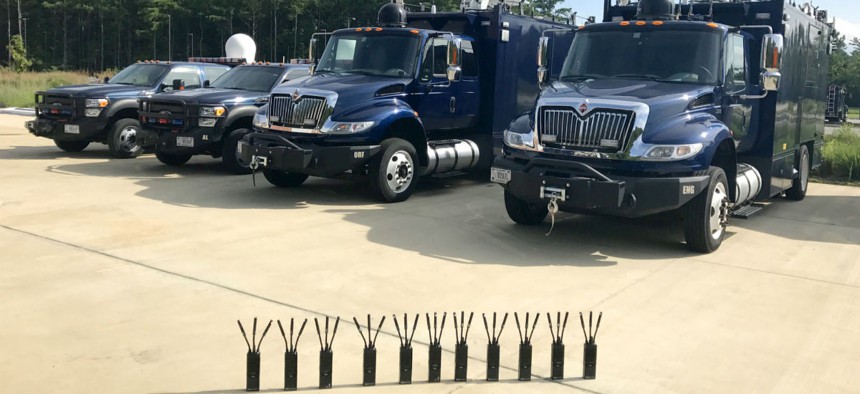National Guard’s Smart Radios Create Networks in Disaster Zones

Persistent Systems
The radios link together to create a secure network on the fly—even where there isn’t infrastructure.
The Army National Guard’s Civil Support Teams recently joined a long list of military and law enforcement groups in adopting MANET technology, a smart radio system that creates an IP network to relay audio, video and location data.
In July, the Army awarded an $8.9 million contract to Persistent Systems, an industry leader in MANETs, or mobile ad hoc networks. The system works as a “beehive” of individual smart radios that can transmit information directly between units or across a web of radios without the need for any central hub.
An official with Persistent Systems told Nextgov the company recently finished training the National Guard’s Weapons of Mass Destruction CST units. The teams are specialized units responsible for preventing chemical, biological, radiological and nuclear incidents around the country and work with other federal, state and local authorities.
» Get the best federal technology news and ideas delivered right to your inbox. Sign up here.
MANETs allow groups to operate in areas without communications infrastructure, sending audio, high-definition video, location and other data across a secure network of potentially hundreds of radios. Network range varies depending on the environment, but tests have shown a pair of radios can connect at up to 30 miles away. Because the radios can relay information across a web of devices, the network could potentially stretch hundreds of miles.
The lack of a central hub makes MANETs ideal for “connectivity on the move,” said Nick Naioti, the vice president of business development with Persistent Systems. Unlike traditional radios, MANETs provide strong, consistent networks that can run up flights of stairs, between blocks of buildings, and even underground. Such technology allows law enforcement and military groups to coordinate operations in regions with high cell traffic or where a disaster may have wiped out existing infrastructure.
Naioti confirmed that many components agencies within the Homeland Security and Justice Departments have purchased this technology, including the Coast Guard, Secret Service, Customs and Border Protection, FBI, Drug Enforcement Agency, and Bureau of Alcohol, Tobacco and Firearms and Explosives.
A number of groups within the Pentagon also have deals with Persistent Systems, where Louis Sutherland, who oversees Persistent Systems’ military contracts, says MANETs have far exceeded agency specifications.
“The big transition for the military was from using a radio for just voice to suddenly using it exclusively for data,” Sutherland told Nextgov. “[Traditional] radios are using technology that doesn’t do data very well. You see these guys and they have all these expectations for something that marginally works... and then when they get ahold of our equipment, they’re like ‘Wow.’”
Each radio also provides an ethernet cable and HDMI port to connect other devices to the network, and the radios themselves operate on Android, enabling apps for location tracking and other utilities important for conducting operations. Legacy radios can also connect to the network by tethering to a smart radio.



